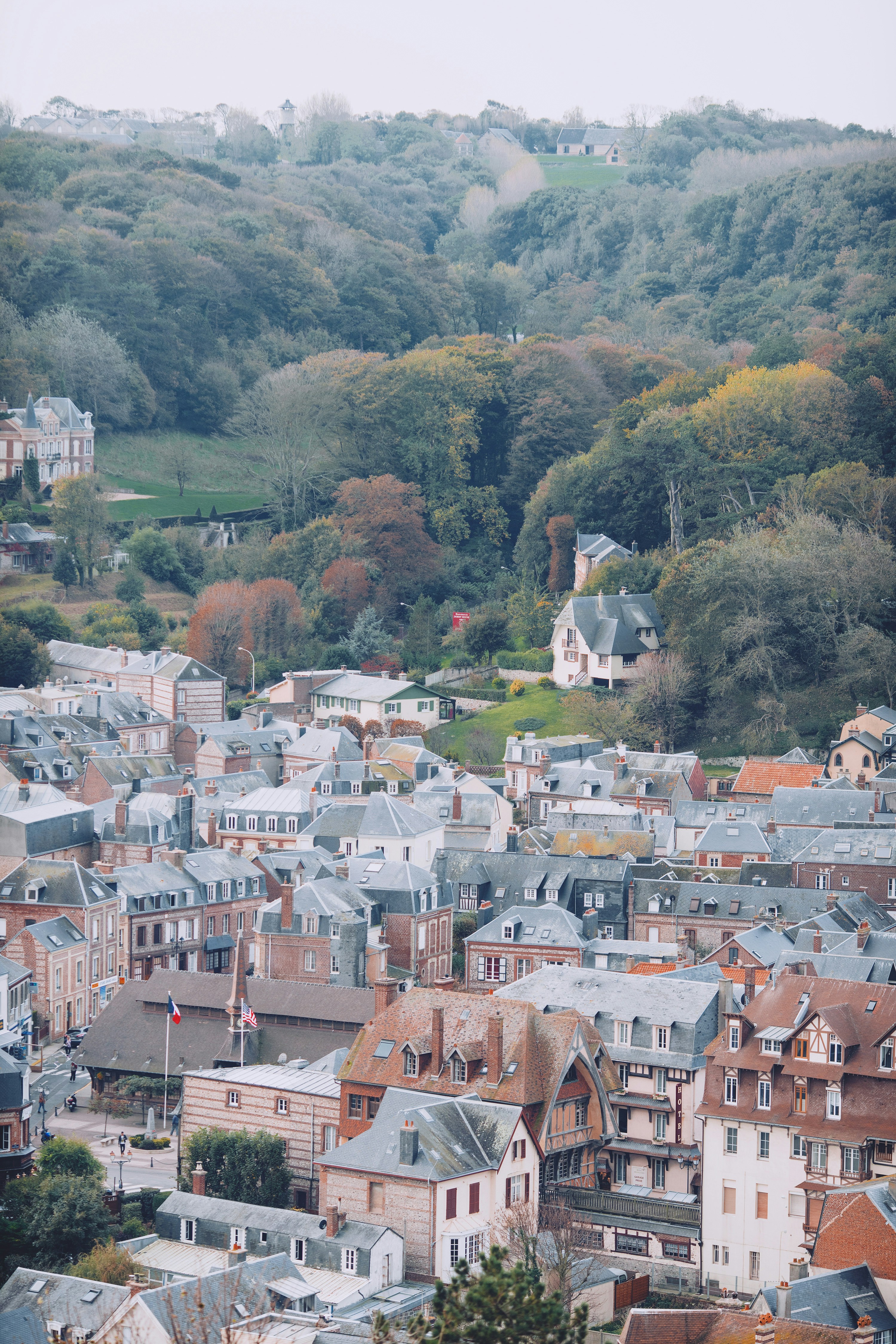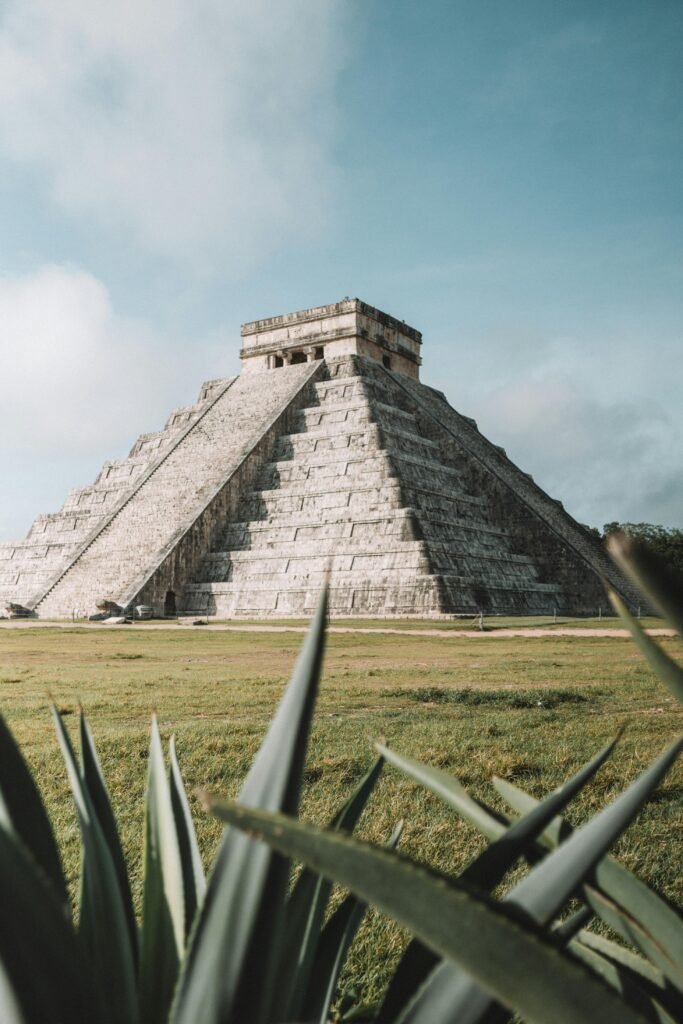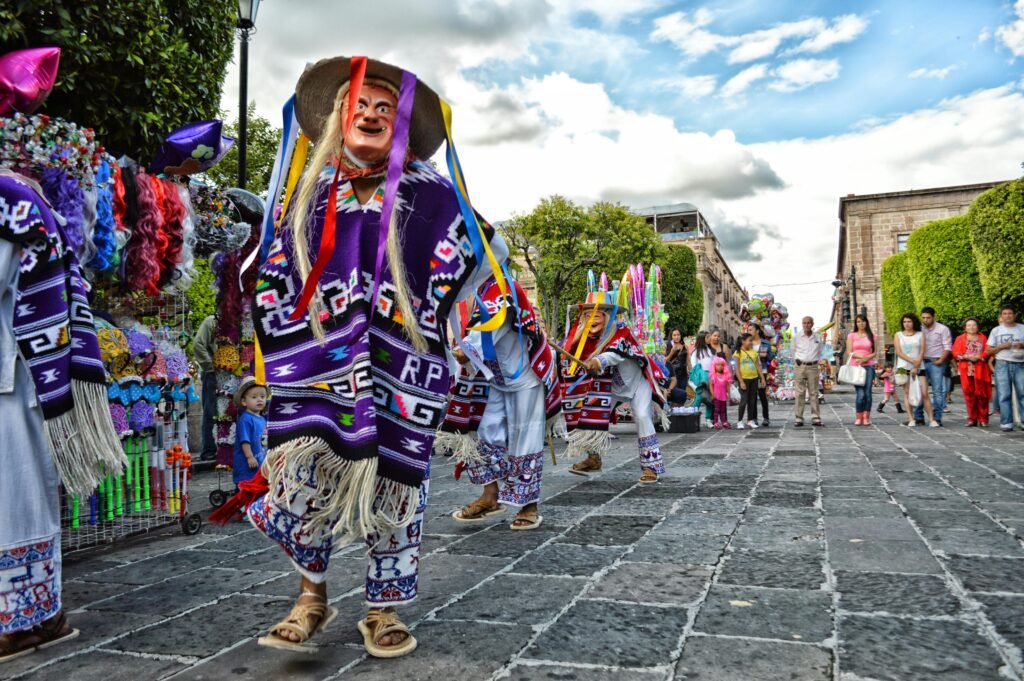Introduction to Mexico’s Magical Towns

Mexico is renowned for its vibrant culture, rich history, and stunning landscapes, but it holds an enchanting secret that offers a unique glimpse into its heritage: the Pueblos Mágicos, or Magical Towns. This designation is granted by the Mexican government to towns that possess extraordinary qualities, such as historical significance, cultural depth, and breathtaking natural beauty. Each Pueblos Mágicos is an embodiment of Mexico’s diverse traditions and regional distinctions, making them essential destinations for those seeking to immerse themselves in authentic Mexican experiences.
The Pueblos Mágicos program was established in 2001 to promote tourism in towns that display remarkable charm and character. To qualify, these towns must not only showcase their historical relevance but also present their customs, traditions, and unique landscapes to visitors. This initiative aims to bolster both community pride and economic development, inviting tourists to explore and appreciate Mexico’s rich and varied lifestyle.
Each Magical Town offers a distinct experience, shaped by its local customs and the warmth of its residents. From ancient ruins to colorful festivals, the towns are living museums of Mexican culture, showcasing artisan crafts, delectable cuisines, and time-honored practices that have been passed down through generations. Moreover, the natural surroundings of these towns further enhance their allure, offering breathtaking views, serene landscapes, and opportunities for outdoor adventures.
Visiting any of the Pueblos Mágicos allows travelers to engage fully with the local way of life, fostering connections with the community and an appreciation for Mexico’s cultural heritage. Whether it’s wandering through cobblestone streets, partaking in traditional celebrations, or savoring regional dishes, the experience is enriched by the palpable sense of history and pride found in these towns. Ultimately, Pueblos Mágicos represent the heart and soul of Mexico, inviting those who venture there to create unforgettable memories.
Valle de Bravo: Nature and Tradition
Valle de Bravo, nestled in the heart of Mexico, is a picturesque town renowned for its breathtaking lake and the majestic mountains that encircle it. This charming destination offers a rich blend of natural beauty and cultural tradition, making it an integral part of any travel itinerary. The shimmering waters of Lake Valle de Bravo are perfect for a variety of outdoor activities, including kayaking, paddleboarding, and fishing, all of which allow visitors to fully immerse themselves in the serene environment.
The town is steeped in history, characterized by its colonial architecture, which reflects the influence of Spanish settlers. Walking through the cobblestone streets, one cannot help but admire the intricate facades of the historic buildings, including the 17th-century Church of Saint Mary. This architectural marvel stands as a testament to Valle de Bravo’s rich cultural heritage.
Aside from its stunning landscapes and architectural treasures, Valle de Bravo is famed for its vibrant local festivals, which offer a glimpse into the traditions and spirit of the local community. The fiestas held throughout the year attract both tourists and locals, showcasing lively parades, traditional music, and folk dances that resonate with the town’s cultural roots. Food enthusiasts will also find delight in sampling the local cuisine, which features traditional dishes with regional ingredients, enhancing the culinary experience of this enchanting location.
Outdoor lovers will appreciate the diverse options for exploration in Valle de Bravo. Hiking enthusiasts can traverse the surrounding mountains, offering spectacular views and a chance to connect with nature. Whether enjoying a leisurely stroll by the lake or engaging in more vigorous pursuits in the hills, Valle de Bravo truly embodies the harmony between nature and tradition, establishing it as a magical destination in Mexico.
Tulum: A Blend of History and Ocean Beauty
Nestled along the Caribbean coastline, Tulum is a town that seamlessly intertwines its rich historical roots with breathtaking natural beauty. At the forefront of Tulum’s allure are the magnificent Mayan ruins that stand majestically overlooking the azure waters of the Caribbean Sea. These ancient structures, once a vital port for trade, now serve as a stunning backdrop for visitors seeking to explore the remnants of an advanced civilization while enjoying the serene coastal landscape.
Tulum is not only famed for its archaeological significance but also for its eco-friendly ethos. The town has emerged as a leader in sustainable tourism, promoting responsible travel practices that protect its natural resources and cultural heritage. Many accommodations have embraced this green philosophy, featuring eco-conscious designs that blend harmoniously with the environment. The stunning beaches of Tulum are a testament to this commitment, offering soft white sands and clear turquoise waters that invite relaxation and exploration.
In addition to its scenic charm, Tulum boasts a vibrant local artisanal scene. Visitors can stroll through the bustling markets and boutique shops, where they will find a range of handmade crafts, textiles, jewelry, and original art that reflect the area’s cultural richness. Supporting local artisans not only enhances the visitor’s experience but also sustains the community’s creative expressions.
Cultural festivals in Tulum further illustrate the town’s dedication to preserving its Mayan heritage and contemporary art scene. Events celebrating traditional music, dance, and culinary arts create opportunities for locals and tourists to engage with Tulum’s diverse cultural tapestry. These festivals are a must-see for anyone wanting to delve deeper into the unique blend of historical legacy and modern-day creativity that defines Tulum.
San Miguel de Allende: Arts and Architecture
San Miguel de Allende, a UNESCO World Heritage site, is a jewel in central Mexico known for its remarkable colonial architecture and thriving arts scene. The town’s vibrant streets showcase a unique blend of Baroque and Neoclassical styles, with the iconic Parroquia de San Miguel Arcángel serving as the centerpiece of its picturesque skyline. The pink stone façade of this parish church, completed in the early 20th century, exemplifies the stunning craftsmanship that characterizes the town’s architecture.
As an artistic hub, San Miguel de Allende attracts painters, sculptors, and artisans from around the globe. Numerous galleries line the cobblestone streets, offering a diverse array of artworks that reflect both traditional Mexican themes and contemporary styles. Established artists and emerging talents alike find inspiration in the town’s vibrant atmosphere, making it a focal point for cultural exchange. Annual events such as the San Miguel International Film Festival and the Festival de Música de Cámara de San Miguel de Allende further reinforce the town’s reputation as a center for creative expression.
Moreover, the local cuisine enriches the cultural landscape of San Miguel de Allende. From authentic Mexican street food to upscale dining experiences, visitors can indulge in a variety of flavors. Many restaurants emphasize fresh, locally sourced ingredients, showcasing traditional dishes that reflect the region’s culinary heritage. The town also hosts numerous gastronomic festivals, allowing participants to celebrate and experience the richness of Mexican cuisine.
San Miguel de Allende’s festivals, such as the Día de los Muertos and the Fiesta de San Miguel, showcase traditional customs and beliefs, drawing both locals and tourists. These events provide a glimpse into the community’s deep-rooted cultural identity while fostering a sense of unity among residents. Through its arts, architecture, gastronomy, and festivals, San Miguel de Allende stands out as a vital cultural destination that offers an enriching experience for all who visit.
Taxco: Silver and Colonial Charm
Taxco, a captivating town nestled in the mountains of Guerrero, Mexico, is famously known for its rich silver mining history. The town’s origins trace back to the colonial era when silver was discovered in the surrounding hills, leading to a booming trade that established Taxco as a prominent center for silver craftsmanship. As visitors wander through the winding, cobblestone streets, they are greeted by a picturesque scene characterized by stunning baroque architecture and vibrant cultural expressions.
One of the most iconic landmarks in Taxco is the Santa Prisca Church, completed in the 18th century. This breathtaking structure exemplifies the height of baroque design, featuring intricate facades and towering spires that dominate the skyline. The church’s grand interiors, adorned with elaborate altarpieces and religious artwork, reflect the town’s deep spiritual heritage and the wealth generated from silver mining. It stands as a testament to the artistry and dedication of the craftsmen who contributed to its timeless beauty.

Taxco is also internationally recognized for its silver markets. The bustling plazas fill with vendors showcasing an impressive array of handcrafted silver jewelry, decorative items, and intricate crafts. This vibrant market scene not only highlights local artisans’ skills but also serves as a vital economic pillar of the town, linking the rich silver heritage to contemporary craftsmanship. Here, tourists can revel in the unique opportunity to purchase authentic silver products, each telling a story of the long-standing traditions inherent in Taxco’s history.
The influence of silver mining on Taxco’s culture is profound, with local traditions intertwined with this precious metal. Festivals and celebrations often feature silver-themed elements, reflecting the community’s pride in their craftsmanship. Visitors to Taxco are not merely sightseeing; they are immersing themselves in the heritage of a town that celebrates its unique blend of silver prosperity and colonial charm.
Valle de Bravo: The Enchantment of Rural Life
Valle de Bravo, a picturesque town nestled in the mountains of Mexico State, is a testament to the country’s rich rural heritage. Surrounded by lush forests and situated beside the tranquil Lake Avándaro, the town offers a glimpse into traditional Mexican life. The agricultural landscape plays a fundamental role, with local farmers engaging in sustainable practices that contribute to both the environment and the community. Corn, beans, and various fruits are cultivated here, showcasing farming methods that have been passed down through generations.
An intriguing aspect of Valle de Bravo is its commitment to sustainable tourism. The local community has embraced the idea of promoting eco-friendly practices, aiming to balance the flow of visitors while preserving the area’s natural beauty and resources. Agritourism initiatives allow tourists to participate in farming activities, fostering a deeper connection with the land and the people who call this enchanting town home. This sustainable approach ensures that the rural environment continues to flourish, offering educational experiences about agriculture and conservation.
Traditions in Valle de Bravo are vital to the local identity. Various seasonal events are celebrated throughout the year, reflecting the community’s rich culture. One notable event is the annual Festival of the Virgin of the Senor del Rosario, which includes vibrant parades, traditional music, and local cuisine. Such festivities emphasize the importance of family and communal bonds, where locals come together to celebrate their heritage and share their customs with visitors.
The essence of rural life in Valle de Bravo represents more than just stunning landscapes; it encapsulates a lifestyle deeply rooted in tradition, sustainability, and community. Those who visit are not only treated to breathtaking views but also an invitation to experience the heart of Mexican culture.
Real de Catorce: A Ghost Town Revived
Real de Catorce, nestled in the Sierra de Catorce mountains of Coahuila, stands as a testament to Mexico’s rich mining history and the transient nature of prosperity. Once a bustling silver mining town in the 19th century, it boasted a thriving population and significant economic activity driven by the lucrative silver deposits discovered in its vicinity. The town’s historical significance is accentuated by the architectural remnants that pepper its landscape, telling tales of a bygone era when it played a crucial role in Mexico’s silver boom.
However, like many mining towns, Real de Catorce faced considerable challenges. By the mid-20th century, as silver prices plummeted, the town’s fortunes declined, leading to depopulation and neglect. Buildings that once echoed with lively chatter became silent, and the vibrant streets fell prey to the ravages of time. Despite its ghostly aspect, this decay imparted a distinct charm, attracting adventurous spirits intrigued by its haunting beauty and spectral ambience.
In summary, Real de Catorce embodies the juxtaposition of past and present. The revival of this ghost town invites exploration and appreciation of its unique heritage, while fostering a new narrative that intertwines its historical significance with the vibrant experiences of today. This enchanting destination is a captivating representation of Mexico’s ability to embrace its history while nourished by the promise of the future.
Pátzcuaro: The Lakeside Haven

Nestled on the shores of Lake Pátzcuaro in the state of Michoacán, Pátzcuaro is renowned for its striking beauty and deep-rooted indigenous heritage. This magical town serves as a haven for visitors seeking a glimpse into the vibrant traditions and customs of Mexico’s indigenous communities. The lake itself, a focal point of local life, offers not only stunning views but also significant cultural importance, influencing the town’s lifestyle, economy, and festivals.
Pátzcuaro stands out for its rich tapestry of traditional crafts and artisanal goods. Local artisans skillfully create intricate wooden items, pottery, and textiles that reflect the unique blend of indigenous and colonial influences. The town’s bustling markets, particularly the Mercado de Pátzcuaro, are an excellent place to experience the local culture firsthand. Visitors can wander through stalls filled with handwoven rugs, colorful pottery, and vibrant crafts, all while enjoying the friendly atmosphere that characterizes the town.
One of the most captivating events in Pátzcuaro is the celebration of Día de Muertos, or the Day of the Dead. This annual festival, which occurs every year on November 1st and 2nd, attracts numerous visitors eager to witness the colorful displays and deep spirituality embodied by the locals. During this time, altars adorned with flowers, food, and photographs of loved ones welcome back the spirits of the deceased. The community involvement during this festival showcases Pátzcuaro’s commitment to preserving its cultural heritage and reaffirming the importance of family and remembrance.
In sum, Pátzcuaro encapsulates the essence of a magical town in Mexico, where visitors can engage with the community and immerse themselves in rich traditions. Its scenic waterfront, vibrant markets, and profound cultural celebrations create an experience that is not just to be seen but felt, making it an unmissable destination for any traveler.
Chichen Itza: A Confluence of Ancient Wonders and Daily Life
Chichen Itza stands as one of the most significant archaeological sites in Mexico, offering a glimpse into the remarkable achievements of the Maya civilization. This UNESCO World Heritage Site, known for its iconic pyramid, El Castillo, reflects the ingenuity of the ancient Maya in astronomy, architecture, and urban planning. The ruins serve not only as a reminder of a bygone era but also as a focal point for the vibrant towns that surround them, allowing local life to flourish alongside cultural history.
The town of Chichen Itza and its nearby communities have developed a unique relationship with the ancient site, where the past and present coalesce harmoniously. Local townspeople take great pride in the heritage they protect and celebrate through various festivals and rituals. These cultural practices not only honor the ancient Mayan traditions but also foster a sense of community identity, creating a vibrant tapestry of life that captivates both locals and visitors alike. Town events often include traditional music, dance, and artisanal crafts that reflect the rich cultural legacy of the Maya.
Tourism plays a pivotal role in the economic landscape of the region. With millions of visitors flocking to explore Chichen Itza each year, the influx of tourism brings both opportunities and challenges. Local initiatives have emerged to promote sustainable tourism practices, ensuring that the natural and cultural resources are preserved for future generations. These efforts aim to enhance the visitor experience while respecting the historical significance of the site and minimizing environmental impact.
Through a blend of historical reverence and modern community spirit, Chichen Itza not only stands as a testament to the impressive legacy of the Maya civilization but also embodies the ongoing celebration of cultural heritage. The residents’ commitment to maintaining the balance between preservation and development presents a model for coexistence that enriches both the town’s life and its ancient wonders.
Conclusion: Embracing the Magic of Mexico
As we conclude our journey through the enchanting towns of Mexico, it becomes clear that these destinations offer more than just picturesque views and historic architecture. Each town encapsulates a unique essence, inviting travelers to immerse themselves in its distinct culture, traditions, and community spirit. The magic of Mexico lies not only in its stunning landscapes but also in the experiences that come from genuine interactions with the local residents. Embracing local customs can profoundly enrich one’s visit, leading to a deeper appreciation of the region’s history and culture.
Engaging with the welcoming inhabitants of these magical towns allows travelers to forge meaningful connections, creating lasting memories that resonate long after the journey has ended. Whether it’s participating in traditional festivals, savoring authentic local dishes, or discovering hidden gems off the beaten path, the multifaceted experiences available in these towns offer a transformative opportunity for any traveler.
With rich histories, vibrant art scenes, and breathtaking natural surroundings, these towns are not just places to pass through, but destinations to fully experience. Travelers are encouraged to embrace the rich tapestry of life found in Mexico’s diverse regions. Consider venturing beyond the ordinary and exploring these magical towns, where every turn can reveal new stories and inspire heartfelt connections.
As you plan your next adventure, contemplate the wonders waiting for you in these extraordinary locales. By visiting these towns, you not only uncover the essence of Mexico but also contribute to preserving their unique cultures. Let the allure of these destinations draw you in, ready to create unforgettable experiences of your own.
